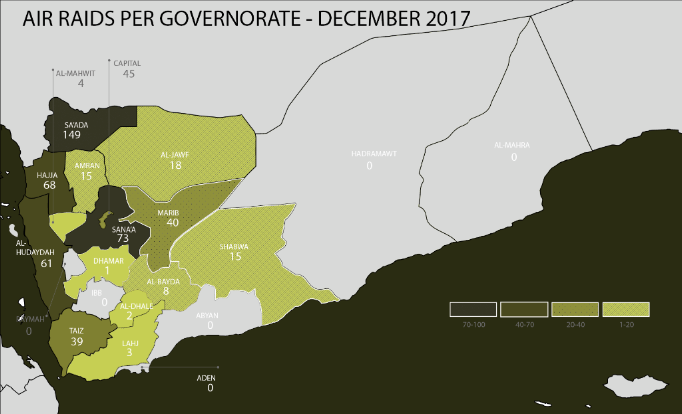
Hostilities between Saudi Arabia and Yemen increased in December 2017, as Saudi-led coalition forces intensified the air campaign on the Iranian-backed Yemeni-Houthi forces. 541 strikes were recorded by the Yemen Data Project (YDP), up by 67% from November 2017 and the highest number of bombings in a single month since January 2017.
Sa’ada remained the most heavily targeted governorate in December 2017 with 149 air raids recorded. The increased activity in the region of Hudaydah coincided with a new ground offensive – launched after the death of former president, Ali Abdullah Saleh, on 4 December – and territorial gains made by coalition-backed, anti-Houthi forces in Hudaydah governorate.
The YDP indicates that as strikes intensified, they became less discriminate, with 195 of attacks (36 percent) targeted non-military sites; and just 14% targeting military sites. According to YDP, the change contrasts with the overall pattern of Coalition air raids in Yemen since the start of the air campaign. From March 2015 to December 2017 almost one-third of all targets (31%) were non-military and 38% military.
Yemen air defense on Monday morning fired a ground-to-air missile at a Saudi F-15 while it was flying over the capital Sanaa, the Yemeni army said in a statement, that provided no further details. This event came one day after a Saudi Tornado strike fighter crashed when operating in the Sa’ada province, north of Sanaa. A video of the engagement released by the Yemeni forces shows a view of an F-15S Eagle flying opening full afterburner, releasing flares and then intercepted by an unidentified object, likely a surface-to-air missile. Official Saudi sources attributed the loss of the Tornado to a technical failure. A Saudi combat rescue operation that supported the mission rescued the two crewmembers.




















